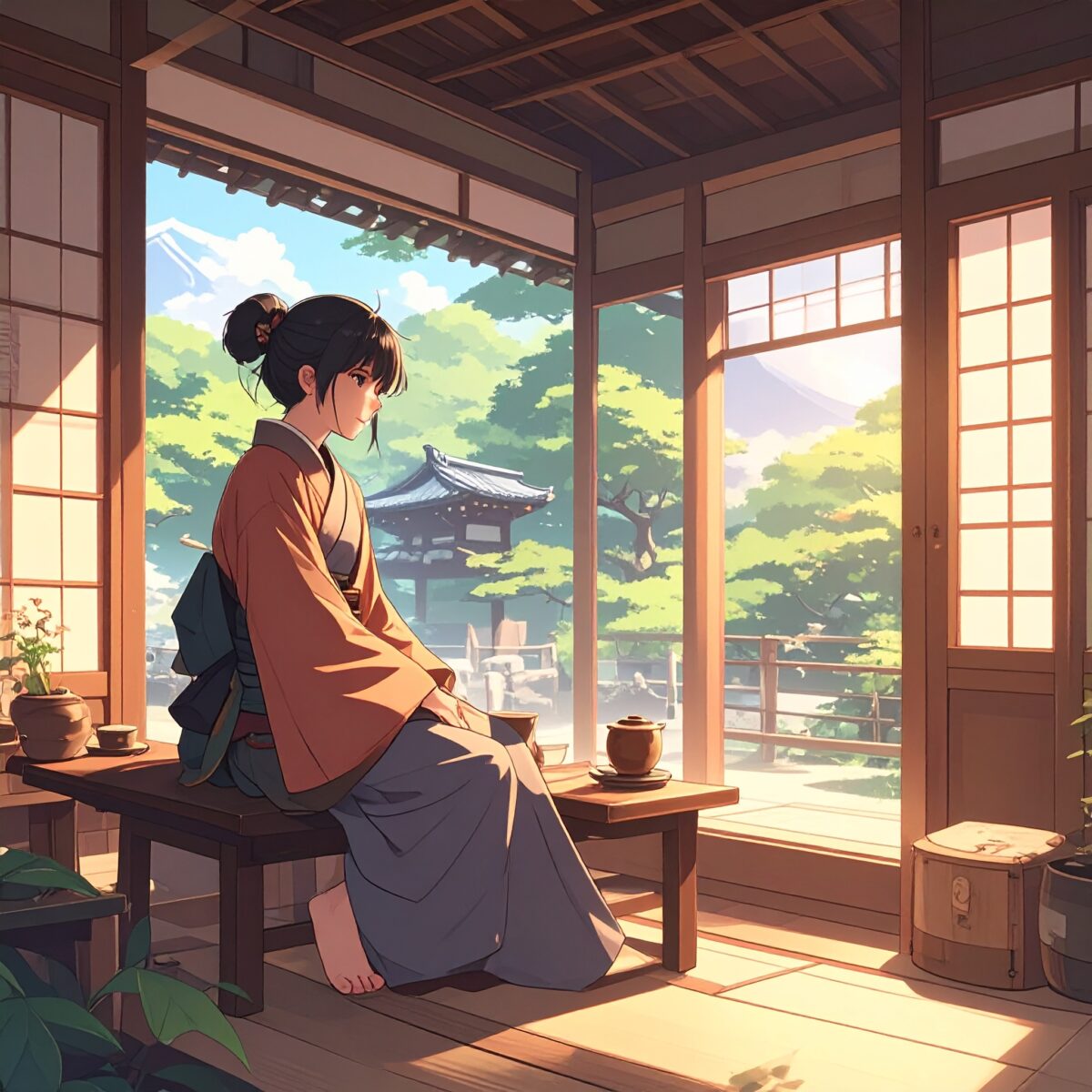One of the most frequently referenced concepts when discussing Japanese aesthetics is wabi-sabi. Though wabi and sabi each have distinct meanings, together they express a deeply rooted sensibility in Japanese culture—a unique perception of beauty and spirituality. Rather than seeking flamboyance or perfection, wabi-sabi finds beauty in imperfection, quietude, and the passage of time. This worldview stands out globally as a rare and profound value system.
Wabi refers to an appreciation for simplicity and the beauty found in modesty or even lack. It embodies the idea that even when things are not complete or polished, there is beauty to be discovered through the spirit and ingenuity behind them. A single flower in a vase, a cracked tea bowl, the shadow of bamboo swaying in the wind—these are not perfect objects, but their very imperfection gives rise to deep emotional resonance.
Sabi conveys the beauty that emerges over time. A rusted piece of metal, weathered wood, aged stone pavements—these objects gain value not from their newness, but from the quiet dignity accumulated through years of use. It is the aesthetic of timeworn grace, where the traces of age evoke depth and authenticity.
This philosophy of wabi-sabi is woven into every aspect of Japanese culture—tea ceremony, gardens, architecture, and traditional crafts. A tea room, for example, is devoid of ornate decoration. Its elements—earthen walls, tatami mats, wooden beams, and paper screens—create a space of silence and reflection. In this humble setting, people engage with one another, attune themselves to the sound of boiling water or the gestures of tea utensils, and find inner calm. What matters here is not outward beauty, but the state of the heart.

Wabi-sabi is also deeply rooted in the Japanese relationship with nature. Rather than the full bloom of cherry blossoms, it is a single petal falling in the wind that captures the heart. Instead of the bright blue sky of midsummer, it is the pale, overcast sky of late autumn that resonates. This appreciation for stillness over splendor, for fragility over strength, reflects the very essence of the Japanese view of nature.
This aesthetic sensibility continues to influence our modern lives. Amid the busyness of daily routines, a fleeting scene may catch our eye, or the quiet texture of a handcrafted object may stir something within us. These moments show that the spirit of wabi-sabi still lives within us, often unconsciously, shaping how we perceive the world.
Wabi-sabi does not reject imperfection or age. On the contrary, it embraces “lack” and “oldness” as forms of richness. It offers a gentle perspective that accepts the emptiness or incompletion within ourselves. Rather than valuing only what is finished, it honors what is still becoming—a profound philosophy that also speaks to how we live our lives.
To embody wabi-sabi is to see the world with different eyes. It means not rushing to conclusions, but instead taking time to nurture relationships. It means valuing subtlety over showiness, and drawing close to quiet presences. This attitude enriches our connections with people and objects alike.
Learning from wabi-sabi means embracing stillness, and accepting imperfection. And perhaps, this quiet and reflective aesthetic is exactly what we need in the complexity of today’s world.




